#lore: marzanna
Explore tagged Tumblr posts
Text
All That Glitters is Blue + BLU Lore
I'll never level cap BLU, I said. I'm too nervous to do group content for spells, I said. Masked Carnivale is too hard, I said.

ALL THAT GLITTERS IS BLUE, BAYBEEEEE
Whoever it was that decided the thunder AoEs should have a random pattern better sleep with one eye open from now on, that's all I'm saying. The achievement wasn't even hard to get because I always forget to use Sprint anyhow, it was just a matter of using every element and not destroying the crystal — the real challenge was beating him in the first place! Screw Goldor Rush, honestly.
Anyhow – beating Goldor and finishing the ShB BLU questline made me want to write a bit about how it really went in Raginmar's canon, so that'll be under the cut!
The first thing to note about the BLU questlines in Raginmar's canon is that they did not happen with Raginmar. The real BLU mage in this canon is Marzanna:

She's the one who heard rumours of a strange new magic in Limsa Lominsa and got roped into Martyn's shenanigans (and thus the BLU questline), becoming Azuro the Second. She easily gets exasperated by Martyn's shameless gil-grubbing and spineless kowtowing, but she genuinely respects and admires him for giving her a new direction in life when she felt she had nothing else to live for.
There are some deviations, obviously — in the Stormblood BLU questline, Marzanna is unfamiliar with Gyodo and Kageyama (because Raginmar was the one who met Gyodo in the Stormblood MSQ, and he was the one who drove off Kageyama from Kugane Castle) and in the Shadowbringers BLU questline, Latool Ja says some hero went and saved the star and Martyn gripes about how he could have helped.
Which brings me to this point about the Shadowbringers BLU questline: most of the new spells are from the First, right? So how in the world did Martyn know about them?
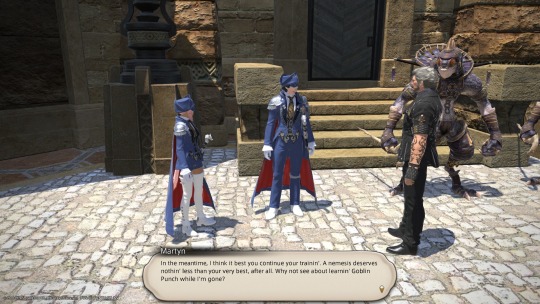
In the level 73 quest, we actually see him use Deep Clean on Trachtoum — a spell learned only from the Seeker of Solitude, a singularly unique individual on the First! There's no equivalent enemy in Eorzea, so 1) who added spells from the First to the blue magic spellbook? and 2) how did Martyn even learn them?

We can't answer the second question — maybe Martyn figured out how to get to the First, maybe he got whoever it was who added the spell to the spellbook to teach him, we don't really know. But from Martyn's statement, we can conclude that the adventurer responsible for adding those spells would be someone who's travelled so much that they've even gone to distant shards. There aren't a lot of people who can claim that, and fewer still who are blue mages.
In fact, there's only one person who fits both bills.
It's Raginmar.
But hang on, you say. Raginmar's not a BLU mage, you said, it's Marzanna. Well no. Raginmar isn't a BLU mage, meaning he's not the mage in the BLU questline, but he is very much a blue mage. Sometime in ARR, Martyn needed help with an issue or other and Marzanna introduced him to Raginmar, saying that he'd help for the low, low price of a BLU job stone and the most basic of instructions. Chaos ensued, but eventually they did get to the instructing part — when Martyn's Mamool Ja assistants summoned a Kraken for Raginmar to learn Water Cannon from, instead of the comedic beating the player character (i.e. Marzanna) got in the starter quest, Raginmar dodged the Kraken's attack and one-shotted the thing with a burst of lightning. He then turned around and fired off a Water Cannon at a nearby tree, snapping the trunk in half and sending it toppling to the ground. "Not bad," he said, then nodded to the dumbstruck Marzanna and Martyn, said his farewells and left.
Unlike Marzanna, Raginmar isn't a particularly dedicated blue mage. Marzanna actively goes around the realm searching for stronger enemies to fight and learn spells from; Raginmar only happens to pick up spells from enemies he happens to face. He never went back to the BLU guild — I'm not sure if he even knows Martyn ever set up a proper guild, but Raginmar does end up writing to Martyn every once in a while, detailing new enemies and attacks he'd learned from them. He's probably responsible for most of the spells listed in the spellbook, even.
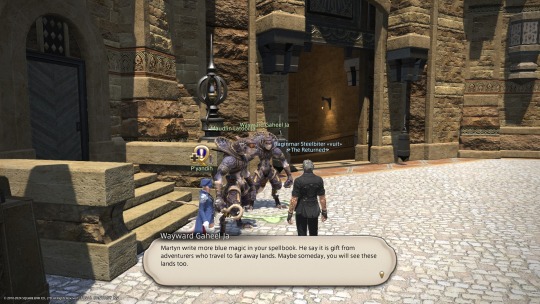
"He say it is gift from adventurers who travel to far away lands. Maybe someday, you will see these lands too."
Ignoring the fact that it's Raginmar in the screenshot, this line ties in perfectly with the idea that Raginmar is the one who shared those spells from faraway lands that Marzanna had never seen. Raginmar's been to the First; Marzanna has not. Raginmar is the one who fought Titania and Innocence and learned devastating new spells from them, and shared them with Martyn to add to the blue magic spellbook. It all works out, and I personally love it.
Anyhow: the Shadowbringers BLU questline revolves around Martyn searching from a new nemesis for the acclaimed Azuro the Second, as the Celestium has begun losing viewers due to many finding the matches boring. Eventually it's revealed that Martyn himself is a very skilled and powerful mage; he demonstrates his prowess in a match against an Ishgardian dragoon and ends up playing Goldor, Azuro the Second's latest nemesis.
This is more or less what happens in Marzanna's BLU canon, save for one rather important change: in the original questline, they're looking for someone who can challenge the BLU mage who's also the Warrior of Light. In Marzanna's canon, the BLU mage is not the Warrior of Light. In other words, the Warrior of Light himself is a perfectly viable potential opponent for the great Azuro the Second!
Marzanna does tentatively suggest this to Martyn and Royse; level-wise this would be at the beginning of the questline, likely level 71. She explains that the Warrior of Light, the selfsame one who went and saved the star from certain destruction, is a member of her adventuring party. She's not certain he would agree to performing in the Celestium, but she thinks it wouldn't hurt to ask. Royse agrees and dispatches Martyn and Marzanna to find him.
When they do find him, Raginmar predictably refuses on the grounds that he's not interested in performing for coin, and also he takes combat too seriously to put on a show the likes of the Masked Carnivale (in that same vein he refuses to spar with anyone because he doesn't really know how to pull back enough to not kill his opponent; he just goes all out). Martyn takes the refusal graciously (and gratefully; someone as legendary as the Warrior of Light would be expensive to hire) and leaves, but Marzanna hangs back when Raginmar motions for her to. At first he questions why they're seeking someone like him when they have a powerful mage already, and when Marzanna expresses her confusion, he explains that through his sensitivity to aetheric signatures, he could tell that Martyn is a master of magic, possibly at the level of archmage. Marzanna is doubtful at first, but the arcanist she meets in the level 73 quest confirms it:
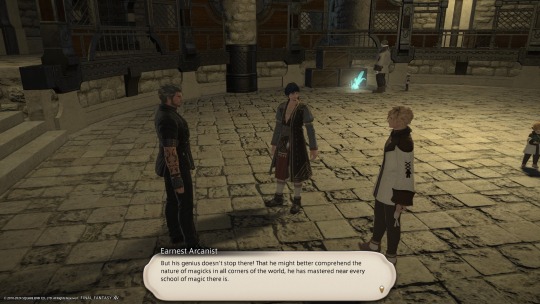

Addendum: this is also why Raginmar is exceptionally good at blue magic without much trying. Raginmar is a master of multiple schools of magic — black, white, and red that combines the two, in addition to advanced arcanima and ancient Nymian scholar arts and summoner magicks — which means like Martyn, he has the requisite knowledge to properly master the Whalaqee's blue magic.
Addendum #2: it's a little hypocritical for Martyn to be baffled by the Golden Goliath using different types of magicks simultaneously back in the Stormblood BLU questline; in the level 78 quest duel against Ser Alaimbert, he's shown to use multiple types of elemental spells: wind and earth (white magic), lightning (black magic) and gravity (Astrologian magic?). There's only one other person who's capable of that sort of feat — Raginmar.
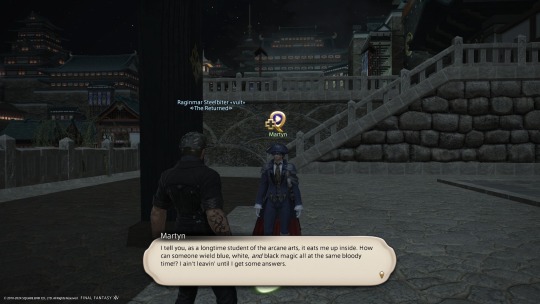
But I digress. Point is, it was Raginmar who first pointed out to Marzanna how strong Martyn actually is, but it wasn't until the level 78 quest that Marzanna (and Royse) believed it.
And there you have it, the BLU questline as per Marzanna and Raginmar's canon! I'm really looking forward to Dawntrail and what it could mean for BLU; I don't particularly enjoy the Masked Carnivale (actually I don't enjoy it at all) but I do love the lore and I'm looking forward to possibly meeting the Whalaqee for ourselves!
#final fantasy xiv#final fantasy 14#ffxiv#ff14#raginmar#marzanna#fun times#character lore#lore: raginmar#lore: marzanna
2 notes
·
View notes
Text
This is going to be a long one (laughs)
— x — x —


Raginmar Steelbiter and Hyllizirn Ahldachtwyn
These two are siblings by marriage! Currently their family consists of them, Raginmar's father and Hyllizirn's dad. Raginmar's mother is a hardcore isolationist member of the Sharlayan Forum who was in cahoots with other isolationists who'd sent assassins and bounty hunters to kill him and his father way back when, so the relationship between them and the mother is understandably chilly. Hyllizirn's mother is a free-spirited Hellsguard adventurer who's roaming the lands making a name for herself as a legendary adventurer; Hyllizirn herself aspires to surpass her mother's exploits one day. Despite not having seen or heard directly from her mother in years, Hyllizirn still thinks of her fondly.
Their fathers are very lovey-dovey! Raginmar's father is a scholar of ancient civilizations, an historian and linguist both. He was also hunted by the Empire specifically for his expertise in Allagan history. After fleeing the Empire (and the Ilsabardian landmass completely) he met Hyllizirn's dad, a Sea Wolf pirate mercenary captain-turned-seafaring merchant—they fell in love, got married, introduced their kids to one another, and are now very happy together somewhere in the South Sea Isles.
— x — x —
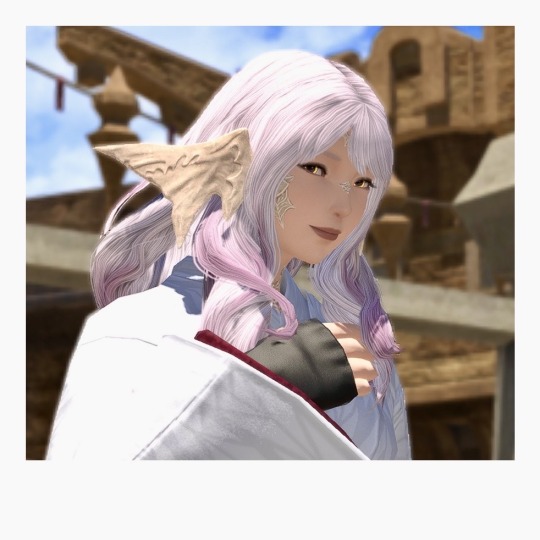
Kirika Kagutsuchi
The Kagutsuchi family of Hingashi was once a clan of honourable warriors who have since pivoted into trading their way into wealth and prosperity, and Kirika is the heir to that mercantile dynasty. Her family consists of just her and her parents: a mother who spared no expense in raising her daughter to become the perfect successor to the family business (and never really forgave that daughter for leaving the family business to adventure in distant lands) and a workaholic father who only realised how much he wants to dote on his daughter once she left home. While there are many cousins and aunts and uncles, she isn't close with any of them due to the status divide between her (main family heir) and them (branch family members).
For her part, Kirika is somewhat distant from her parents and is a little resistant to her father's attempts to dote on her after she reconciled with them in Stormblood (and after giving them a piece of her mind for their more morally-questionable business decisions). It was her father who bought her the cottage in the Goblet that now serves as the adventuring party's home base, and it took significant persuasion from several of the party members to get Kirika to accept the gift from her father.
— x — x —
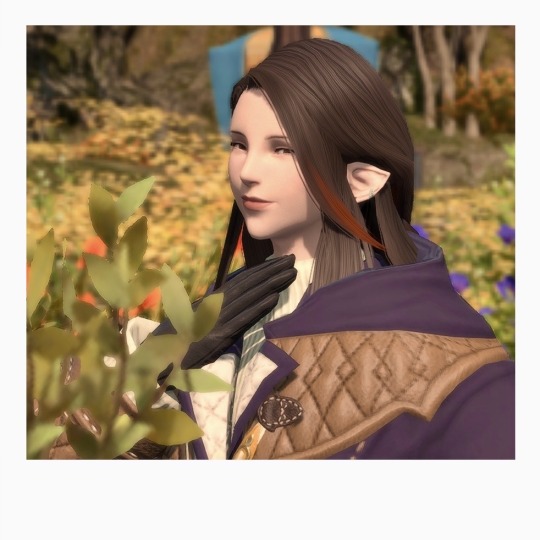
Adricienne Brookes
Adricienne is basically Hilda in reverse; her Elezen mother came from one of the four High Houses of Ishgard, while her Hyuran father was a commoner formerly employed by said house. When they fell in love, Adricienne's mother chose to leave her family to be with her lover and they both made their way to Gridania to live a modest and happy life together. Their happiness would be short-lived, however—soon after Adricienne was born, her father disappeared and her mother was left to raise her with no family and no income to support them both. Eventually Adricienne would discover the truth behind her father's disappearance and the family would be reunited, but while they all love each other very much, Adricienne's relationship with her father is a little stilted and awkward due to almost three decades of estrangement, and she is much, much closer to her mother thanks to growing up in a single-parent household.
— x — x —

Marzanna Branmirasch
Orphaned at a young age, Marzanna's only family was her younger brother, Mirothgar. The two's paths diverged from their differing beliefs regarding the Imperial occupation of Bozja: Marzanna believed joining the Empire would pave the way to a better future, while Mirothgar wanted to free their homeland. Marzanna joined the Imperial corps and rose up the ranks as an engineer, while Mirothgar joined a fledgling band of Bozjan resistance fighters and perished in the line of duty. Marzanna would only learn of her brother's death decades later, spurring her to desert the Imperial corps and travel the world in search of the man who last saw her brother alive, and a reason for her brother's convictions.
— x — x —

Sasariku Nonoriku
Sasariku is a foundling who grew up alongside other abandoned children on the streets of Ul'dah. A lonely man wandering the city took him along and brought him home to the East Shroud, where they had a short but happy life together as father and son before the man passed away from illness. Several years later, Sasariku met another lonely young man—a deserter from the nearby Baelsar's Wall—who sought refuge in his tiny abode from Wood Wailers and Imperials alike; this man would later become the closest thing Sasariku had to a brother. He, too, eventually passed away from illness, leading Sasariku to finally leave the East Shroud.
— x — x —


Canso Lechanteur and L'vazha Tia
These two don't really have much in way of traditional families, so to speak; Canso was forcibly taken from the Golmore Jungle by the Imperials in exchange for keeping the rest of his people out of harm's way, so he's basically cut ties with them completely. L'vazha was raised by the red light ladies who took him in when he was a boy; it was very much a communal village-raises-a-child kind of thing, so while he does care for them greatly he doesn't have a close familial bond with them or anything.
None of them have children for various reasons (aroace, actively adventuring, never at home, personal choice) but I do have a character who's happily married with four kids—he's a very minor character, though, so there isn't much for me to say about him beyond that (laughs)
WoL/OC Question of the Day
Tell me about your WoL/OC's family.
Tell me about their parents, their kids, their siblings.
I want to hear about wol/oc families so bad. Please tell me about them!!
#ff14#ffxiv#final fantasy 14#final fantasy xiv#lore: raginmar#lore: hyllizirn#lore: kirika#lore: marzanna#lore: adricienne#lore: sasariku#lore: canso#lore: vazha#raginmar#hyllizirn#kirika#marzanna#adricienne#sasariku#canso#vazha#the adventuring party
68 notes
·
View notes
Text
marzanna headcanon and lore.
the type of vampire marzanna exists as is unique to the Bloom Vixen - connected truly to the Rot's core. there are only ever 20 of these vampires allowed to exist but that number is only ever known by the Vixen. this was a blessing, given to the pure of heart and by choice to undergo the transformation into undeath. it has great power but very large downsides.
yes this vampire form must be given not forced for any reason. the person must have 3 reasons to give to the Vixen which proves their heart's purity and why they want this power. once they've convinced the other vampires and the Vixen they will take to ritual to die and be reborn.
these vampires are near invincible and unkillable. they have super speed, super strength and overlapping visions. some will have certain magics or have mutant like abilities - like shapeshifting in a bat. they are prime killing machines. and unfortunately they don't die easily. a single cell left behind and they can regrow back from any Garden the Vixen has. they must be entirely, completely, destroyed to be stopped.
they can also spread Rot from their bites and claws ( at will ). Rot is a force from the Vixen that can mutate any type of biological cell to become something of the Vixen's control. they are only allowed to spread when given orders.
the downsides is that their bodies are at all times dying. they feel the agony of death tenfold and cannot feel any pleasure or warmth. in order to slow this death and decay of their mortal body or to even find some peace from the pain they must consume life in any way they choose. ( they don't have organs or stuff like that. ) some choose to drink blood, some choose to eat flesh, some choose to simply suck out the life essence magically. the more life they eat the slower they die and the less they hurt.
life can be found in plants or beings but beings are known to give more back. so they take from beings alive. the younger the life, the better.
but all vampires have to follow the rules. they cannot take a life from anyone unwilling. they cannot refuse a life being given to them by a person themselves. they cannot take a life from any child without formal consent of the Vixen. ( plants are also often off the table per rules. )
3 notes
·
View notes
Text

Image Credit: Duchess of Lore
Marzanna or Morana was a Slavic goddess portrayed as a figure representing death, winter, and disease. The figure is braided from straw into the shape of a human and dressed in traditional local women's clothing. The tradition started by burning the straw doll and drowned it in the river afterward.
Personal Practice:
Once learning about the Drowning of Marzanna in Poland, I had an instinct of feeling how disrespectful that practice was, and I felt very connected to the duality of her spirit and always loved winter and felt more as peace during the cold.
I changed up the purpose of the drowning to my personal practice to be more of a ritual of letting Marzanna know that her work has been completed and she can rest. So I make her a cup of sleepy time tea and offering of dead plants. Then in the Autumn, I 'wake her up' with coffee to let her know that the world needs her attention.
I found her based on how she looks. I did a YouTube mediation to find your inner witch and I visualized walking down stairs into the woods and there stood a pretty but mysterious woman with dark straight hair in the woods. I later read that Marzanna and Baba Yaga could be connection through the Mother, Maidan, Crone archetype and the two represent similar powers.
1 note
·
View note
Text
gonna interpret the likes as curiosity about the name SO! her name is marzanna. now for those unaware marzanna in polish is the name of a slavic goddess of... death. there was a legend in which her death brings spring and there's a tradition of drowning a marzanna doll (basically a straw puppet) to chase away winter. i remember at the very start of primary school going to a lake with one of those dolls, other kids and our teacher and putting it in the water. so you might be wondering okay what the fuck why would you name your dog that. and well! my dog was adopted from an animal shelter on the first day of spring and the woman working in the shelter was like you should call her marzanna. so she's been marzanna (or marzka usually) ever since. and you all actually needed to know this lore to appreciate how funny i'm being in the tag:


(she succumbed to nominative determinism)
who wants to know what my dog's name is
#she rly does hate water#only time she went into a lake was bc she saw me in the lake and got worried#so she swam to be checked on me and left IMMEDIATELY#she hates! water!#which is just so hilarious okay yeah makes sense girl sorry. i wont drown you but i understand the anxiety#HDHSBSBSB#dog blogging
42 notes
·
View notes
Text
since i’ve talked about my need for slavic representation, i’ve decided to add my girl baba jaga to the roster after all, as well as my slavic spirit oc (shapeshifting supreme ghost, patron of free will).
#( out of character. )#i need to make a page for jaga#mostly gonna focus on morally ambivalent witch of the woods that was demonized over time#as for vola. well i will write about vola#an annoyance of slavic gods who upon being approached by veles simply said no to the afterlife#can be a nightmare but is mostly chill??#only marzanna can wrangle vola because of Love and Respect#anyway.#page also needs more info i feel like i need to establish more lore and timeline#i love slavic folklore so much my Roots.
9 notes
·
View notes
Photo
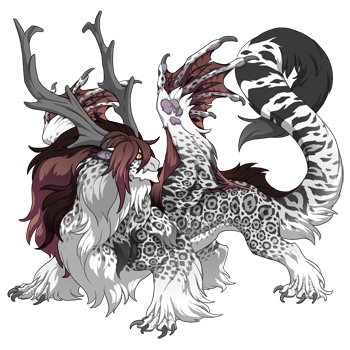
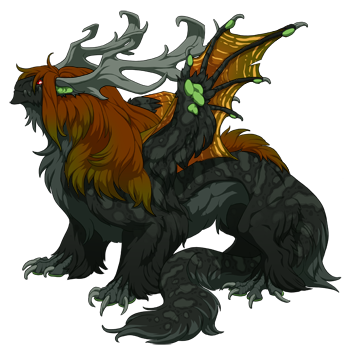
Seekers: Part 1
Two Gaoler Seekers stationed in the Wasteland begin their day. (Written as in-canon human/“beastly” forms.)
As Lumina comes to, she can feel the lips meeting her cheek softening into a smile. She keeps her eyes shut as she holds back a smile of her own, but the calloused hand moving the hair out of her face isn't helping the facade.
"Luminita... Luminiiita..."
The hand is nearing her jaw, and those lips are nearing her ear. She can't believe that she feels almost herself blushing at something that small. It's been years by now, after all.
"It's morning, Luminita..."
The Gaoler rolls over to face her partner, smile in full form. Marzanna has their own sort of sleepy charm at the moment, but they don't look nearly as tired as Lumina imagines she does, late as it must actually be. The shifting of the clouds makes the sun beat against the outside of their tent like rain, and those moments of translucence that the brilliant, late-morning sunlight grants the fabric is more than enough to make Lumina grateful for the night's long-gone cover. And, more than enough to embarrass her when Marz pulls their bodies together, still smiling into their kisses. The Scarred Wasteland possesses none of the supervisors or higher-ranking uppities that once so loved to separate training Seekers- but there's an impulsive fear present that makes Lumina quietly laugh and wrap a leg around Marz anyways. Pity she's such a terrible listener, so rebellious, so feeling, they'd say, because she's awfully skilled at what she does.
But, for a few moments, Lumina can't think about much of anything as Marz works on her neck. They're not quite smiling anymore, but she can't imagine it'd be easy to keep up. Still smiling herself, though, she brushes her fingers through her partner's messy, morning hair as the words discreetly escape her mouth. "How long have you been awake, hm?"
"Since sunrise," they mutter with that smile, still playful, as they break their affection. Nestling their chin on Lumina's chest, their arms weave their way around the larger Gaoler's hips. Adoring red eyes gaze into their lover's gentle yellow, and Marz knows, if they were draconic at that very moment, there'd be little to stop themself from purring. Not as long as those fingers grace their hair.
"Sunrise?" Lumina weakly whispers, almost with genuine surprise. "You let me sleep so long, love. I thought you'd just overslept too." She laughs again, louder and freely, and can't see Marz's pure ecstasy at the expression. It's a true shame, though, because she'd have loved to. Regardless, her voice still carries ambrosial remnants of that laughter as she continues on. "Oh, well, you do always scold me for doing the same." Her thumb brushes against Marz's cheek, and she has to restrain another laugh as she can just about feel Marz melting into that touch. "So I'd say we're even now."
They stay like that for far longer than either would like to admit. But they've no targets here, no clues. They have time. To sleep in, to stay put, to admire how that wavering sunlight frames the other's features so impeccably, tempting their lips and tempting their hands. It's Lumina who breaks the stasis, though, speaking up again. "Have you checked the traps?"
Marz pauses, as if recalling the greater world. "I- no, not yet. I know you like the walk there. And, even if we've lost breakfast that way, we still have food in store."
"I think we should go check, then. We'll gather what we can, have our late breakfast- and then get to work. I doubt we'll move camp today, but we could always start packing up." She shifts a little, debating whether to so swiftly push her partner away. "Wouldn't hurt."
Marz answers with action, quietly unfurling their arms and propping themself up. Lumina has to stretch a little more, but finds herself in the same position soon. They don't talk as they put on their armor or slip on their boots, and, just as well, leave the tent with that same silence. The clouds are more sparse now, and the wind which fueled them is hot and suffocating once one is the midst of it. Lumina simply pulls the collar of her jacket in front of her nose and mouth, a few muffled coughs escaping, as Marz tolerates it. But, once they properly adjust the hatchet at their hip, they silently reach out a calloused hand to their lover.
Just as well, Lumina takes it with the same silence.
#fr#flight rising#gaoler#fr lore#fr gaoler#fr writing#gaoler fr#they're lesbians!! marz is nb and lumina's a laaaaaaady. just to make it clear.#drakefr#drakeart#lumina#marzanna#745 words... how much is that. short? long?#also yes. expect more.#no one's asked yet but expect more#story: seekers
12 notes
·
View notes
Text
Marzanna
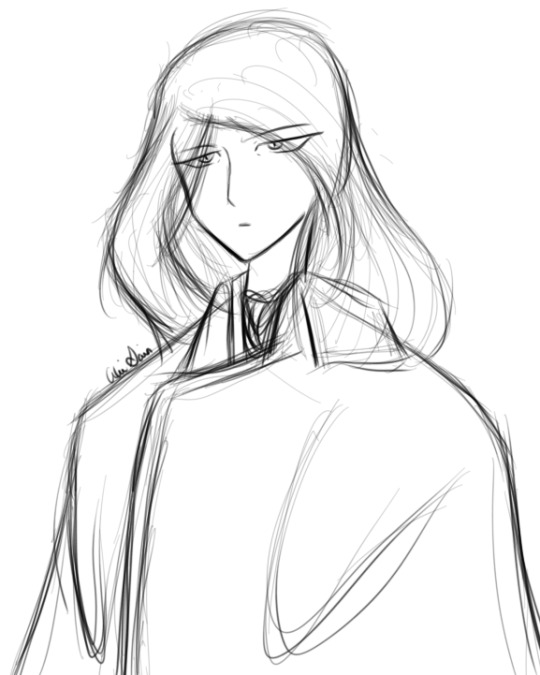
Marzanna is the Grand Prince of Nightmares and a Subordinate of Marowit. His domain within the Dreamlands is a blighted wasteland, where all fear, doubt, and darkness reside. Contrary to his position and domain, Marzanna is actually a kind and benevolent ruler, as opposed to his hedonistic sister Marena.
3 notes
·
View notes
Photo
mute:
In Japanese folklore, Gashadokuro, also known as Odokuro, are giant skeletons, fifteen times taller than an average person, and are constructed from the bones of people who have died from starvation. Their bones are collected into this giant skeleton creature which is filled with intense anger and a thirst for human blood. He wanders around at night, grinding his teeth and making a “gachi gachi” sound. The giant skeleton towers so high above the ground and walks so quietly that he can be almost invisible. The only warning you get when the giant skeleton is near is a strange and inexplicable ringing in your ears.
If the Gashadokuro finds you, he will reach down with his bony hand and snatch you off the ground. Then he will pluck your head off and suck the blood out of your headless body until his thirst is quenched.
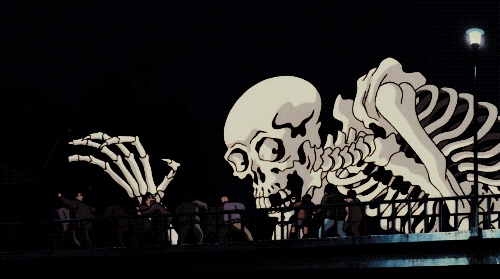

#the wandering voices || myth & lore.#gif /#skeletons /#salice || interests & aesthetic.#marzanna || interests & aesthetic.#resurrection || queue.
110K notes
·
View notes
Note
The closest thing to Easter I can think of would be burning/drowning the effigy of Marzanna. It symbolises winter leaving and welcoming spring ie. rebirth of nature. There isn't really a direct link to any stereotypical Easter traditions I don't think (I never heard of bonfires being a thing for Easter, it's definitely something I'll look into as there might be a link between the traditions there).
I did a bit of research on easter eggs a few years back (I say research, it was just intensive googling) hoping to find something about holidays predating Easter (in slavic countries). Sadly, haven't had much luck. Every site says they originate from pagan practices with no additional info.
I tried collecting as many rebirth/spring equinox slavic celebrations/traditions in hopes I could somehow connect them. Sadly, not much luck here either. It's like every other tradition somewhat correlates apart from spring traditions.
I do wonder if the burning of Marzanna and the burning of Pust are related. They aren't celebrated at such close dates, but the tradition and symbolism is very similar, though I suppose the dates today are probably a bit different than how they used to be - especially since I believe neither of these had a fixed date in the past. But I still don't know how easter eggs fit into this (and slavic easter egg traditions feel far to elaborate to be a variation of something imported from another culture, so I definitely agree with those articles about it being a pre-christian thing).
Some sources list Vesna (at least in Croatia) as a spring counterpart to the winter Morana/Marzanna. My guess would be that easter egg and related traditions were performed after the burning of Marzanna as a celebration of the coming spring. (But then here it also gets confusing because the celebration of st. George is also said to celebrate the coming of a spring god, expect here it's not Vesna, which I would say is just different slavic cultures having variations of gods, but st. George celebrations are also of big importance in Croatia - but I'll stop now or I'll be writting about this all day).
Tl;dr I don't know any specific holiday that correlates to Easter in this areas, but there might be some related traditions
And about Easter practices in the place where I live: just colouring Easter eggs, eating traditional food and going to church
Sorry for going on a bit of a tangent (especially if this is stuff you already know). Prechristian slavic traditions are just something I'm really interested in. It's a shame we don't know more about them.
Hey that's some really interesting lore, thank you so much! I was also researching easter eggs today by the method of googling obsessively, but I find different info on every source; croatian wikipedia says they came from iranian spring holiday, Norvuz, I check on the english wiki, and it says the oldest colored eggs were found in Africa, and additionally that it was started as a nobility thing, they were seen as a luxury for nobles to gift to each others at parties.
So I feel like maybe colored eggs were around in multiple cultures and christianity just decided to appropriate all of it for their own causes?
I love both Vesna and Morana as slavic goddesses and I'm so excited to hear someone else speak of them! I'm also very interested in prechirstian slavic traditions and would love to revive them, even in small measures. We had more traditions, like Flower day, when we started the day washing our faces in water filled with flowers, mostly violets, and we'd say good wishes during the washing! Christians also tried to spin it as a 'jesus torture related tradition' and I haven't seen it done in recent years at all.
We also carried a little olive branch to the church to get it blessed to bless our homes with it, and it was used as a protection against storm and bad weather. I wonder what the origin of that was!
If you find out more please let me know! Traditional celebrations make so much more sense to me and I feel that building new culture on that foundation would be very valuable for a meaningful life.
18 notes
·
View notes
Text
Lair review for @Safarirising
@safrising
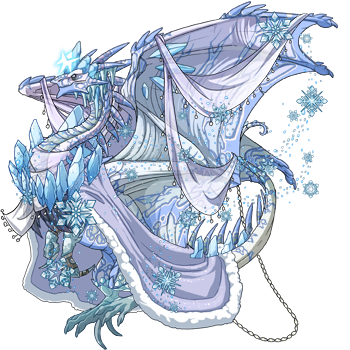
Marzanna
I LOVE her. I really like her outfit, and how it makes her look more royal.
I really want to know more about what her work is like, because it must be hard digging stuff out of ice, or does she just search for digging sites? From ehat I can see in her bio and on her outfir, I imagine she's a very fancy, but practical person.
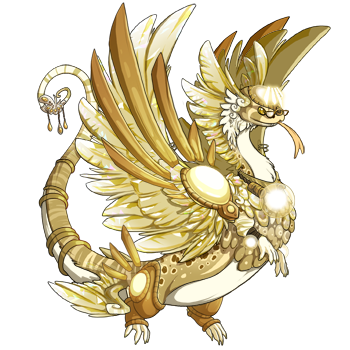
Lore
His quote reminded me of jack sparrow somehow, like, “Nobody move! I think I dropped my scrolls brain somewhere here!” I love that lol! I also really like how his genes look with his outfit (He makes clown POP!)
I feel like he tries to be organized but he mostly fails.
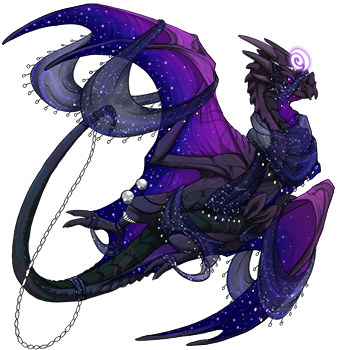
Cosmos
She looks AMAZING. I really like how her accent fades into her wings and that the glitter in her apparel is nearly the same as on her accent! Also what does she actually do for the shadowbinder? Like is she a spy or what? I would love to know!
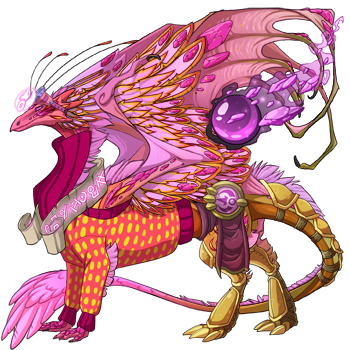
Valentin
I just couldn't not notice thuis bright ball of pink! His whole outfir makes him look like an badass dork! Lorewise I feel like even though he's a battlemage, he's a pacefist that hates fighting and would rather avoid it.
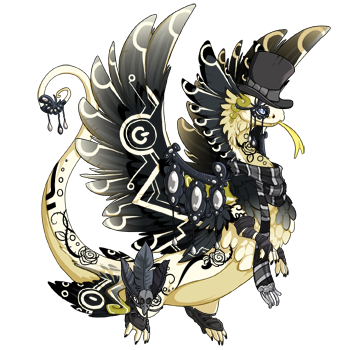
Sorrow
That is one of the most depressing dragons I have seen. Like wow, I fell bad for him. He needs friends, please give him some friends. On a sidenote I relly like his outfit. He looks like a victorian era gentleman mixed with an classy undertaker!!
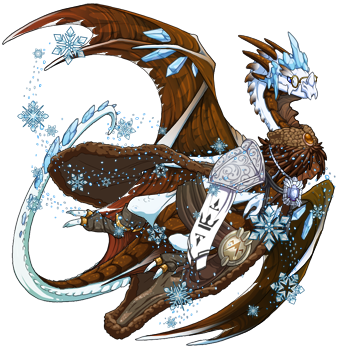
Tunturi
Her outfit is amazing and I love her colours! I never thought chocolate could look this good (bc I tend to avoid xyy’s) Her lore is very interesting, but I have to ask, wasn't she sad to have ended her relationship with Routa? Or was she more happy that she could now step in as a official leader?
BONUS:
Unnamed Spiral
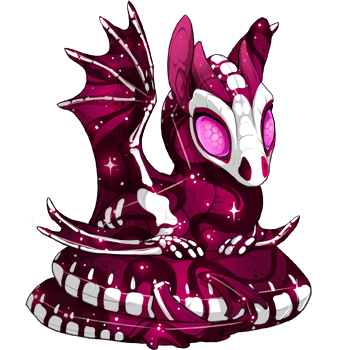
What’s there not to love about this kid? He’s pink, he’s shiny and he has faceted eyes!!! (My favourite type!!)
I saw that he is now the seer of the Arcanist and I just want to ask what that means lore-wise for him because I am interested.
Overall:
This page is a lovable mess of every kind of dragon. I love that almost all of them have either made lore or lore snippets in their bio. And also the fact that their outfits show what kind of dragons they are.
7 notes
·
View notes
Text

This is the outfit and character in question, by the way!
Marzanna was once my least fleshed-out character. I didn't have much of an idea about her background beyond her having a connection with Raginmar due to him being the last person who saw her younger brother alive, and it wasn't until All Saints' Wake (2022) that her character came together in my mind. The Wake Doctor's outfit sparked the idea of a mad scientist, which eventually developed into her current backstory: born and raised in the imperial province of Bozja under Garlean control, Marzanna chose to join the Imperial Legion and rose to the rank of kir as a veteran field engineer over the years due to her aptitude for science and engineering (and also a hefty dose of luck for having superiors who favoured her, much like how Rhitahtyn sas Arvina had Gaius van Baelsar's support).
This meant that she was largely a non-combatant until she left the Empire, and I had the image of her being some kind of combat alchemist (as opposed to the in-game crafter alchemist), primarily providing support using potions and items to change the tide of battle. As she traveled across the realm, she would learn martial arts for her mind and self-defense (hence her MNK job) and blue magic (because as much as Raginmar enjoys learning blue magic he is not interested in the whole Masked Carnivale thing, and I wanted a character who is and incorporates it into her story), but for the most part her main class/job would be this nonexistent combat alchemist class. Role-wise, she'd be a healer—the adventuring party had four damage dealers (Raginmar, L'vazha, Adricienne and Canso) and one healer (Kirika) at that point, so Marzanna would take up the role of second healer before Adricienne hung up her lance and became a SGE sometime after the Battle of Ghimlyt Dark.
Months of leveling MNK and going through MSQ with Marzanna as MNK, however, made me forget about the whole combat alchemist thing. I genuinely and absolutely forgot all about it, and I kept focusing on making MNK glams as I played through ARR with her. Then the Scientist's outfit set came out, and I took a look at the coat and was reminded of her scientist/engineer backstory, and thought "oh man this would've been perfect for her if only she wasn't a MNK" and completely forgot about the whole combat alchemist thing! It wasn't until I was writing up a whole explanation why it wouldn't work that I remembered the combat alchemist bit, and realised that the Scientist's Coat would work for her after all!
So yeah: that's Marzanna's canon outfit now. I'll probably change the colours or something should inspiration strike, but the outfit itself is pretty much decided. I especially like it because the coat very much projects the image of a support combat alchemist, but it also allows her to kick ass as a MNK with it.
I was writing a post about the pain of having the perfect outfit in mind for a character but not being able to have them wear it because it wouldn't make sense for them to do so, but as I was writing about why it wouldn't make sense I eventually talked myself round to making it work after all (laughs)
9 notes
·
View notes
Note
What is dreampeak and the hellfire inn? I haven't heard of your lore before and they sound interesting :o
The Dreampeak: The general name of floating city! It is perched upon floating arcane rocks and is honestly pretty sketchy despite its name. It is a trading hub and general gathering point. The closest aesthetic I can think to attribute to it is Vampyr!
The Empire: The Empire, run by Empress Marzanna, is the government of the Dreampeak. It’s honestly a bit of a mess of political intrigue right now due to Marzanna’s coronation and a complete lack of respect from the general populace.
The Underside: Shady, shady!! If you’re looking for stuff that you shouldn’t be, it’s the place to go. It’s literally the underside of the island, haha. When standing on the ground below (in the forest), gazing up at the Dreampeak, it mimics the stars with its fires. In the day time it’s just a mess of scaffolding and smoke, to be honest.
The Forest: The ground below the Dreampeak is heavily affected by the magic from the floating arcane rocks. Things lurk there. It’s not safe. Do not go into the forest.
The Hellbender Inn: Owned by Symund and run by Oren, the barkeep, The Hellbender Inn is a cozy little place with fireplaces and furs aplenty. Need a room? A drink? Some information? Hang around and someone will surely come by with what you need. It is a frequent haunt for information brokers and mercs.
The Rusted Crown: Underground fight club!! Brothel!! Loud! Run by Astraeus. Its name suits it. Lots of dragons waste their lives away down there. You should probably leave while you still can… but his voice is so catching, isn’t it?
25 notes
·
View notes
Photo
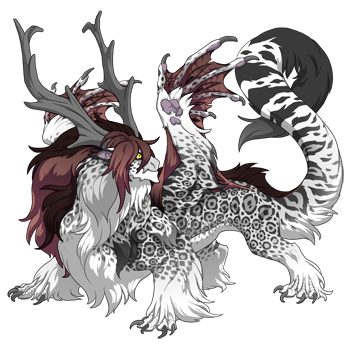
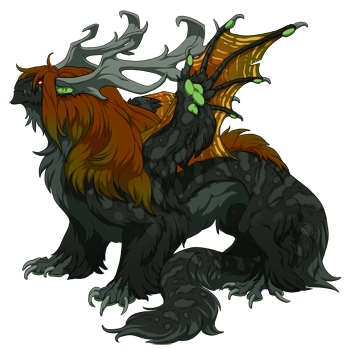
Seekers: Part 2
(< Part 1) Two Gaoler Seekers stationed in the Wasteland begin their day. (Written as in-canon human/“beastly” forms.)
Marz leads the way, having placed the traps initially. It's just practice on a small scale, after all. Best tracker among the training Seekers of that age group, they said; an invaluable skill that had Marz selected for their assignments early. All that they'd needed was someone beside them, with the mastery of magic which Marz lacked. They hadn't known what to make of the Light Gaoler they'd been partnered up with initially, other than that she'd been known as something of an unruly sort, and that she made the tracker's heart race something awful.
She still does, and she's far too skilled at it.
But, for now, she follows Marz, hand in hand, swinging their united grips with her usual playfulness. Once they slow down, it doesn't take long for Marz to pull their lover's hand close, kiss it, and let it go with a palpable reluctance. "The first is just by the brambles. I'll set it up again- as long as you watch my back, Luminita."
Lumina chuckles out an "of course," and stands watch as Marz bends down to fix the clearly empty and, unfortunately, broken snare. But, with the cord they've kept right beside their hatchet, they get to work fixing it. They peek back for a moment. "Something stepped on it, instead of through it- probably some Mirror, honestly. Just... Give me a second..."
"Take your time, today's not looking too productive anyways. Might as well revel in it," Lumina offers. Of course, the wind isn't exactly inviting to stand around in, but it's nothing new. She stands, arms crossed, glancing down at Marz occasionally, and bites her lip behind her jacket's masking collar. Marz grunts under their breath as something snaps. The Light Gaoler still keeps watch, but speaks up again. "Uh, Marz, this really is out of nowhere, but I've been thinking... Are we mates? I know we're... together, however you'd want to put that, but-"
"Mates?"
"-Yeah, mates. As in, if... If we ever had to stop being Seekers, if they told us we had to stay at the Fortress of Ends for good, could we honestly tell them we're in this for life?"
Marz stops fixing the snare, just fumbling with the compenents instead. It's not as if Lumina's looking. "Lots of dragons call themselves 'mates' just to bunk together. They're barely ever in love-"
"I'm in love with you."
"-Or can barely even trust each other-"
"I trust you with my life."
"I would hope you do," Marz turns to say, an odd sharpness to their voice. "We're assigned to each other- the bare minimum would be trusting each other like that. But mates... They're more than that, you know?"
"I..." she sighs. "No, I don't know. That's why I asked. I just want to know where we are."
Marz stays still for a moment, before picking up their cord and rising. "This is a bad spot for this. Too much traffic."
Even with half of her face covered, Marz can read Lumina's (in all honesty, expected) lack of a smile. They awkwardly reattach the cord at their hip. "The snare, I mean." The wind dies down for a moment, letting the heat sink in. "The next one shouldn't be too far."
"Well," Lumina begins, half sighing, before grabbing Marz's hand herself (good sign, Marz thinks, good sign), "You know the way."
The grip is tighter this time, albeit less active. They're looking at the path below their worn boots, even if there's nothing to see, the smashed bones and fleshy lichen coating the ground being perfectly ordinary. It takes too long without anything from Lumina- no small talk, no accidental laughter, no humming- for Marz to speak up. "It just doesn't seem all that important to me. Not when other dragons just waste the title of... mate..." Their hand slips free of Lumina's grasp and finds its way to her lower back. "What does it matter, if we're just out here? You know I love you." Their pace slows now, Marz clearly forgetting their lead. "I don't think we need some label to show that."
"Maybe not," she says. "But I still want to know where we are." Her armor makes it difficult to feel the movement of Marz's hand behind her, but it's enough to sense her partner's slight trepidation. Still, she doesn't falter as she slides her own arm over Marz's shoulder. "I'm content with how we are, though, no matter what you want to call it. I just want to know for certain whether it'll last." Marz's anxious brow doesn't reveal anything very clear, but it's nothing to stop Lumina. "So... It's alright if you don't know what to say. I'm not happy about it, really, but I'm not going to rush you."
Marz finally slows to a halt, standing quietly as Lumina looks back. "...Thanks." The slight squint to Lumina's eyes reveals a small, hidden smile, but it's more than enough to inspire some action in the Plague Gaoler, as they move into the inviting crook of Lumina's arm and usher her along with that open palm on her back. "I, uh, guess we still need breakfast, then. There's just a few more traps to visit. Let's hope they're more successful, eh?"
This time, Lumina is the one to respond with a silent acceptance, trying to read whatever she can on her partner's face. It's a task far easier said than done, and, unfortunately, Lumina knows that all too well. Perhaps Marz will take what she said to heart, though, and consider it in time for another discussion about the matter.
She can't help but think about it, though. Mates. It really was such a loaded thing to say, but it wasn't like it would ever come up organically. Though, it was certainly something Lumina had begun to think about organically.
It was always certain mornings, when Marz carried that sort of lingering affection, and made Lumina long for that attention for the rest of her life. She's no stranger to getting lovesick, but it really is just Marz doing that to her. The stoic and work-minded Gaoler softening up to her is enough to make her ascend, knowing she's been the catalyst in her love's life- but it always feels like an affair to be in love with Marz, like she's betraying some trusted power by letting the Gaoler be vulnerable. No matter how it feels, though, Lumina knows she can't bear to lose what they have. And, perhaps, that's why it matters so much.
Not that Marz has heard any of that- nor might they anytime soon, Lumina realizes, almost painfully, so it's a bit much to expect them to understand. Oh well.
Lumina quietly hums to fill their trek's silence, boots crunching along that graveyard of a ground, wind gradually picking up, Marz securing a grip on their lover's waist. She almost swears she can hear them whisper, under their breath, and hidden by the wind, "You know I love you." But, perhaps, it's just a soft refrain echoing in her mind.
Either way, she's hoping the next traps are farther away than Marz has let on.
#definitely no metaphors here. definitely none#Fr#flight rising#gaoler#fr lore#fr gaoler#gaoler fr#drakefr#drakeart#Lumina#Marzanna#Story:#story: seekers#fr writing
5 notes
·
View notes
Note
This is why it's important for fandoms to have discussions and for differing opinions instead of one person having control over everything and blocking and silencing anyone who wants to point out otherwise.
Mara is a morally ambiguous and often outright villanous character with a lot of complexity rarely given to female characters. No one is obliged to like her ofc, but the amount of hate she got is seriously like... Not healthy. Especially when a lot of the hate is based on misinterpretations and lies.
I genuinely don't understand why she happens to be the only character in Destiny for whom you can't say you like the character without prefacing it with an essay in MLA format assuring everyone that you're aware of every single crime she's done. No one does this for any other character, including characters with a much higher crime and body count.
I'll discuss some additional lore stuff below the cut (long post):
There's also been a weird fixation on claiming that Bungie is using Mara as an objective beauty standard and that Bungie insists that she's the most beautiful woman ever. This is very strange because this simply doesn't exist in lore. Her beauty is definitely mentioned:
Sjur Eido's fury and grief whetted themselves against Mara's thoughtless grace and ancient beauty, until at last her heart unseamed itself and spilled its hot blood in a shout.
But so is Uldren's:
Now there entered into the Diasyrm's camp Osana, mother of Mara, famed for her skill in negotiating contested land. She had come with her son Uldren, who could win a place in any camp for his beauty and for the regal crow-eagle that alighted on his shoulder.
This is also from Marasenna, a lore book with a biased POV so nowhere does it state that Bungie is saying "Mara is objectively the most beautiful woman in the universe."
This line of thinking also devolves into "Bungie made a white, blonde and blue-eyed woman the beauty standard" which makes even less sense because Mara is an Awoken, her hair is bleached white and her eyes are glowing. Now, I'm all for acknowledging that the Awoken, despite being technically aliens, can still be coded as poc (for example Zavala is absolutely coded as a black man) and therefore also coded as white. However, from Marasenna:
She is of no single race or ancestry
Again, biased source but it explicitly states that Mara's family, while they were human, were of no single race or ancestry. Many Awoken are coded as poc, with a LOT of them having names that imply non-white ancestry (Jalaal, Kamala, Nadiya, Nasya and Sedia to name a few). Additionally, the name "Mara" is of Hebrew origin, among others.
Her name is specifically mentioned here:
"You're the devil," Alis Li whispers. "I remember… in one of the old tongues, Mara means death."
This could be referring to the Hindu goddess called Mara which is a goddess of death. The word "mara" means death in Sanskrit. It could also be referring to Mara/Marzanna/Morana/Mora (name varies by culture) ancient Slavic pagan goddess of death and rebirth. It also has an equivalent in Buddhism. The reason for these overlapping meanings is that the word is originally from Proto-Indoeuropean from which a lot of today's languages come from. In Hebrew, it means "bitter." Generally giving off the same vibe as the others.
I'm mentioning this because the discourse around Mara has been warped beyond recognition to the point where people are not even talking about Mara from the video game Destiny anymore.
Allow villainous and morally ambiguous women to exist in media. No one is obligated to like them, but also this amount of virulent hatred and lying about a single character is just beyond me.
I used to love Mara Sov but someone influencal on here in the fandom who I won't name started bad mouthing everyone who liked her and the character herself to I grew to dislike her because of that.
I now enjoy Mara's character again after unfollowing them and replaying D1 and D2 with a full lore re read and I am excited to see her again in the future.
if you’re talking about who i think you’re talking about, she has always been so aggressively hateful (and confident about her hate, much of which is based off lies or twisting the truth) towards mara (and not just mara, anyone who was even remotely sympathetic towards her) that i genuinely believe she spearheaded this widespread mara hate on tumblr. it’s sad bc so much of maras lore in d2 is, in my opinion, very humanizing and interesting. she’s a genuinely well developed and nuanced character so it’s sad that one person on here has essentially convinced a ton of people mara is poorly written and was retconned from a “pirate queen” in d1 when that is so far away from the truth it’s not even funny.
i’m excited to see her again too!! hopefully she gets at least a nod in witch queen (hoping for some queen to queen communication)
#destiny 2#mara#lore vibing#i mean we all know what partially contributed to this but still#the argument about how her beauty is some major plot point and that bungie is forcing us to accept#that mara is the most beautiful creature in the universe is like.... what are you on about tbh#me rambling about ten unrelated things? it's more likely than you think
73 notes
·
View notes
Photo
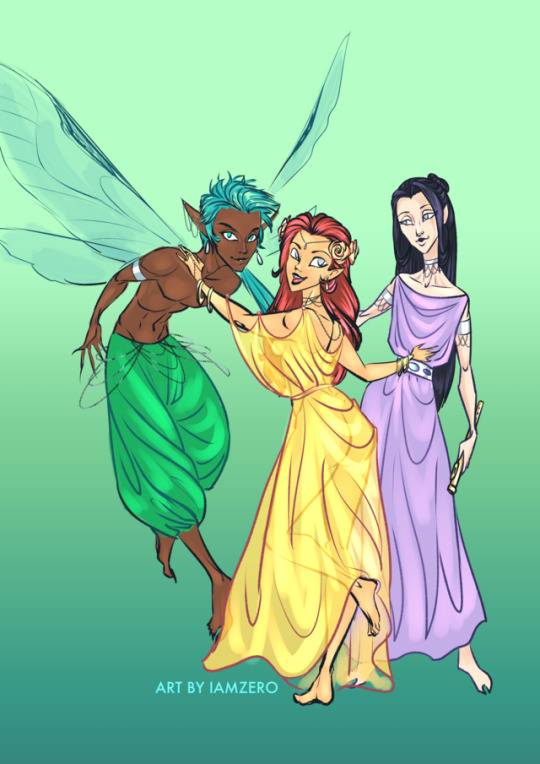
sketching/doodling concepts for Persephone’s buddies in the human realm, friends she grew up with. Esus (Hermes!), Calypso and Kleio.
I decided to rename all the characters so it feels less unoriginal, but I tried to give all the renamed Greek-God-based characters alternative versions of their own names, or names of similar gods or mythical figures. Esus is a Gaulish god that is supposed to be analogous to Hermes, though his legend is pretty different. He’s a really interesting god though, so I liked renaming Hermes after him. I renamed Persephone Morana, after a Slavic goddess of winter and death - the name is nice, and the lore feels appropriate. Morana, or Marzanna (she has many names), is a very scary, formidable goddess, and I wanted some of that cold steel for my Morana. Hades is renamed Aides, which is simply another name he had in ancient Greek lore.
In my story, Esus is a fairy who serves the human queen (analogous to Zeus), so he knows Morana from interacting with her in the palace. He commonly liases between the human queen, the fairy king, and the siren king. He’s the only fairy Morana knows, her mother unwilling to let her meet other fairies who might report her and have her returned to the fairy realm, so he and Morana are pretty close friends on account of that. Calypso is a palace messenger who typically uses a silk and bamboo glider to distribute messages, mail, etc. She’s a siren from the sirens’ realm, and will flirt with anything. She befriends Morana through Esus, and often sneaks Morana into social events and gatherings to have fun. She’s named after a sea nymph (oceanid). Kleio is another siren who works as a court musician, entertaining royalty in the human palace. She bonded with Calypso over a shared love of glider racing, and joined their group as a result. She’s also named after an oceanid.
Being non-humans in the human world has made the group fairly close, and Morana’s friends have a fairly important role in the story when she’s taken back to the fairy realm by Aides.
13 notes
·
View notes